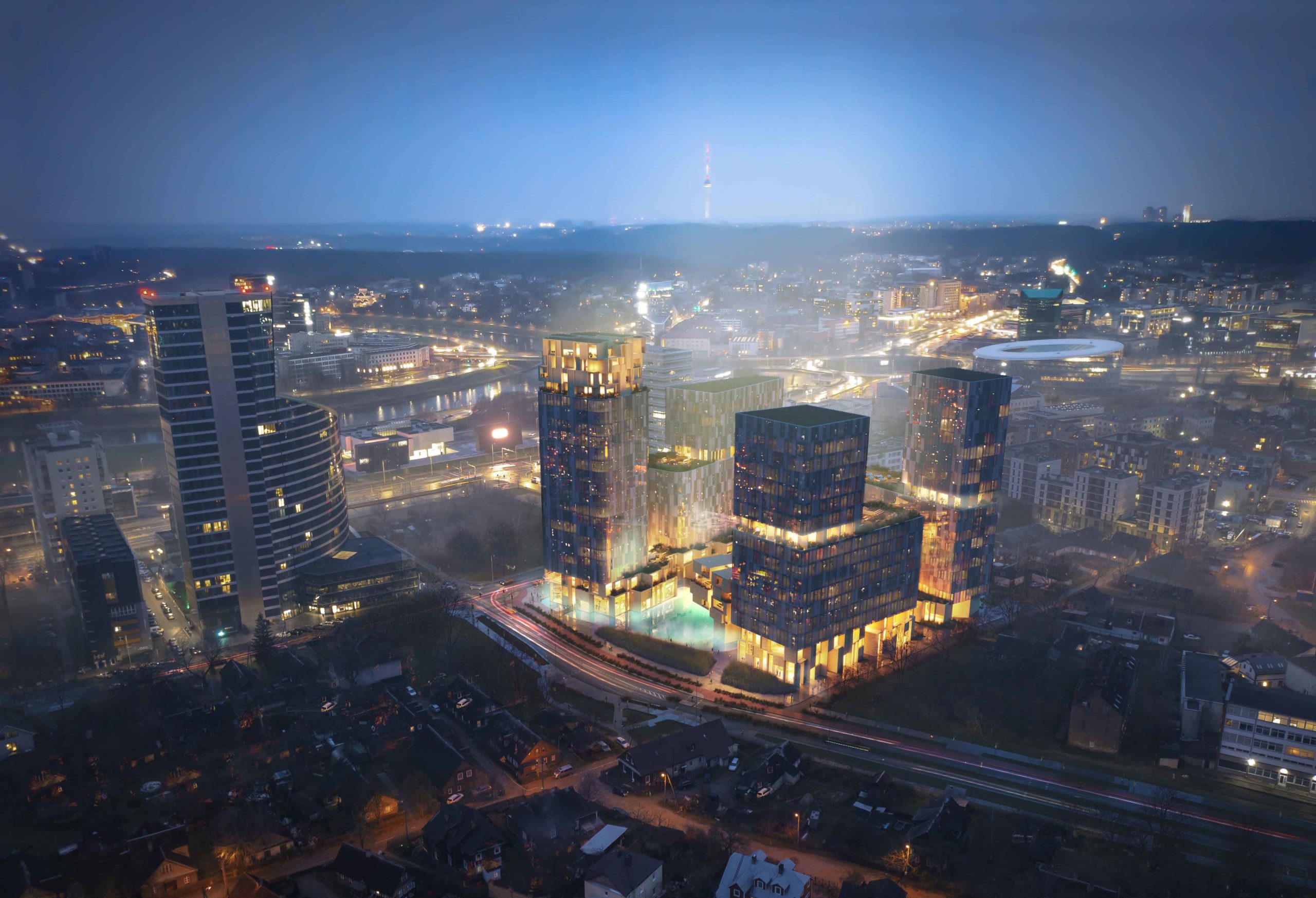Watermark
Watermark
The main idea is to reveal and interpret the local spirit (Genius Loci) of Šnipiškės in architectural language. The new architectural complex is a living organism that responds to the environment, its basic structural features, history, and future visions. The main task is to create the highest quality space for citizens of the city, to rehabilitate the phenomenon of urban life in high-rise buildings. This requires spatial diversity, proximity to services that meet all the needs of life, a high-quality natural environment, exceptional panoramas, the proximity of the working environment, a good connection to the main urban arteries and an assessment of the above-mentioned environmental features for architectural and urban integrity.
- Function
- Multifunction
- Client
- Private
- Authors
- Edgaras Neniškis
- Arūnas Liola
- Rolandas Liola
- Justas Jankauskas
- Emilija Minikavičiūtė
- Greta Vasiliauskaitė
- Artūras Mažeika
- Žilvinas Urbas
- Visual
- noisyowls


An architectural complex is a living organism that responds to the environment, its basic structural features, history, and future visions. The main task is to create the highest quality space for citizens of the city, to rehabilitate the phenomenon of urban life in high-rise buildings. This requires spatial diversity, proximity to services that meet all the needs of life, a high-quality natural environment, exceptional panoramas, the proximity of the working environment, a good connection to the main urban arteries and an assessment of the above-mentioned environmental features for architectural and urban integrity.
The geological phenomenon ofthe environment and the wholearea was assessed during thedevelopment of the concept.First of all, the Neris Valleyformed by the Ice Age glacier,where the river has migratedover the centuries and left itsmarks – the water bodies of the oldriverbed have become one ofthe most famous features ofthe Šnipiškės area. Therefore,our new complex creates itsown water body, which not onlysemantizes the territory, but alsoperforms many other functions The riverbed and the river valley also influenced the network of historical streets and the morphology of the Šnipiškės urban structure. The streets led directly to the river to make it easy for fishermen living in the area to reach it. The network and direction of the latter formed the unique spatial code of Šnipiškės, which is well visible even today. The former way of life and the social structure of the population also influenced the character of small scale rural urban settlement.


he clay deposits have enabled the brick industry to grow in this area starting in XIX century. This allowed to ensure supply of building materials for the construction of the surrounding buildings and to create another phenomenon of the territory.
Growing Vilnius City have changed the status of Šnipiškės as a former suburb – now it is the territory of the city center, surrounded by business and residential centers. This creates favorable conditions for the creation of a new, higher-quality network of public spaces connected by vibrant, pedestrian- friendly arteries, especially the streets of Lvovo, Kernavės and Krokuvos. One of the elements of such a spatial network becomes a designed complex, which inner space contributes to the system of inner public squares starting from the river. This sociability of a space requires it to be of maximum size, undivided and solid.
One of the most significant urban features of this area is the status of a high-rise building hill, which helpsto create the silhouette of the modern Vilnius City. The layout of the towers themselves, the principles ofcomposition are influenced by their status, place in the panoramas, the relationship with the complexesnearby. On the hill, the essential buildings are planned at the intersections, next to the main visualcorridors, axes. The design of the architectural complex have ensured the principles mentioned above:a tower with highlighted verticality is formed at the intersection of the main arteries, while the highparts of other buildings are divided, separating them from the horizontal base, thus emphasizing onedominant.
In addition to the compositional aspects, high-rise buildings provide astounding views of the environment: the river Neris, Vilnius Old Town, Šeškinė hills and eskers, Naujamiestis or Antakalnis areas.